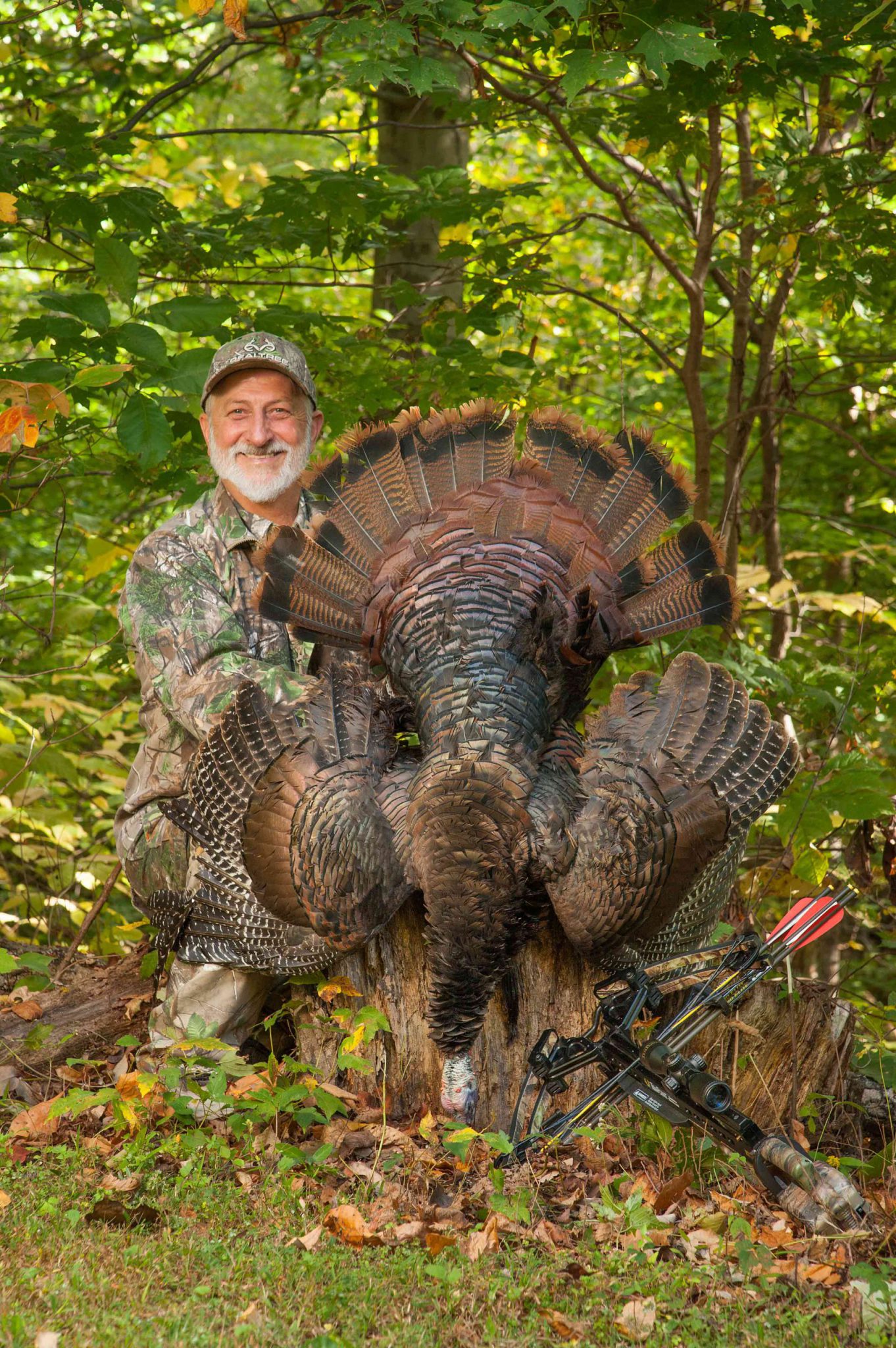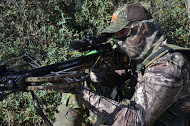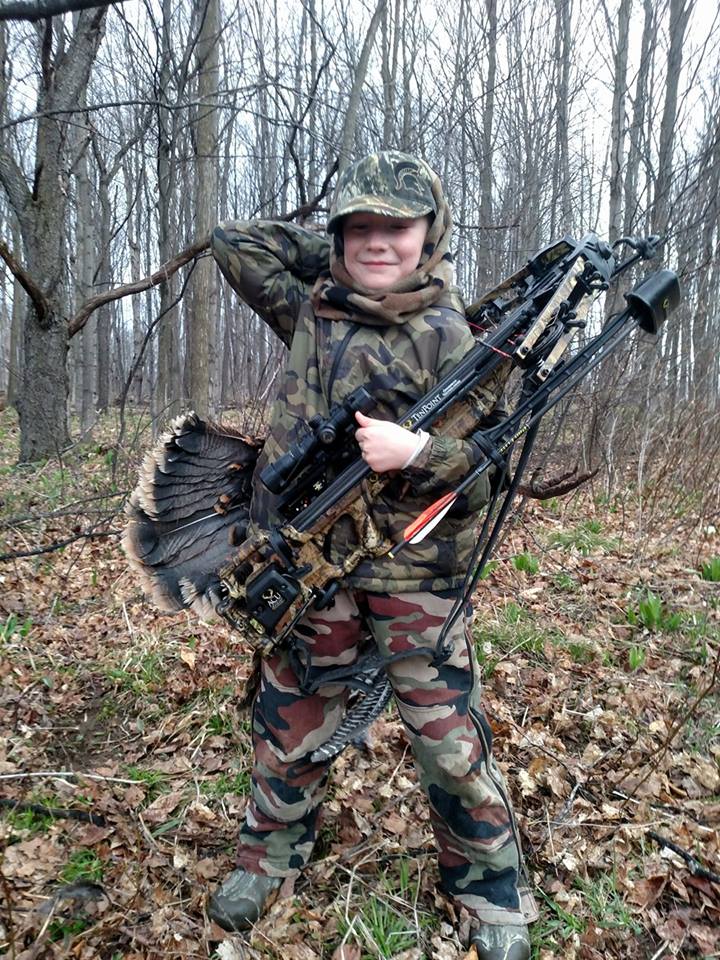3 Turkey Hunting Tactics you NEED to Know
/ April 13th, 2017There is nothing quite like waking up before the world and trekking into the woods, plopping down against a sturdy tree trunk, and listening for the world to awaken. This is especially true when it is mid-April and the thunder of gobbles crack off through the hazy dawn.
You want to be successful on these hunts, toting a shotgun, vertical bow, or the best hunting crossbow, and there are some tactics to utilize that will greatly increase your chances of success.
 First, the art of calling a turkey is not a skill that is bestowed upon you once you’ve purchased your first slate or box call. If it was, then turkey calling wouldn’t be an “art”. It takes practice to get really good at such things. Mastering the “cluck”, “purr”, “yelp”, and “cut” requires investment with your equipment to learn how the call reacts and what you need to do to produce lifelike sounds. The best way to learn this is to listen to how real hen turkeys communicate and what they mean. Being able to replicate the RIGHT sounds is often the difference between drawing in that gobbler and him turning tail and heading the other direction.
First, the art of calling a turkey is not a skill that is bestowed upon you once you’ve purchased your first slate or box call. If it was, then turkey calling wouldn’t be an “art”. It takes practice to get really good at such things. Mastering the “cluck”, “purr”, “yelp”, and “cut” requires investment with your equipment to learn how the call reacts and what you need to do to produce lifelike sounds. The best way to learn this is to listen to how real hen turkeys communicate and what they mean. Being able to replicate the RIGHT sounds is often the difference between drawing in that gobbler and him turning tail and heading the other direction.
Sometimes this can even mean replicating the sounds that other toms might make. Fighting purrs, gobbler clucks, and often the gobble of another tom in the area is enough to fire up that longbeard you’re hunting and bring him in looking for a fight.
Another key here, is to know the turkeys you’re hunting. If there are several jakes in the area, they often gang up and bully lone toms. In this case, you would want to refrain from using male vocalizations and keep that jake decoy out of your setups. That’s a surefire way to scare off any longbeard. A bird won’t come to a fight if he knows he is likely outnumbered. Just like many humans, they don’t like to lose.
 Second, understanding how turkeys interact with their habitat can go a long way to putting you, the hunter, in the appropriate setup. Scouting plays a major role here. It is a myth that turkeys can’t be called downhill. If that were true, then you would only ever find turkeys on ridgelines. However, turkeys, like most other animals, prefer the path of least resistance. So if there is a game trail coming down a fairly steep slope in one area, but that slope becomes more gradual on one side or the other, THAT is where you should expect that tom to make his move. If you do setup downhill from a gobbler on a fairly steep slope, don’t be surprised if he winds up skirting in behind your setup. Odds are, he found a more gradual slope to travel.
Second, understanding how turkeys interact with their habitat can go a long way to putting you, the hunter, in the appropriate setup. Scouting plays a major role here. It is a myth that turkeys can’t be called downhill. If that were true, then you would only ever find turkeys on ridgelines. However, turkeys, like most other animals, prefer the path of least resistance. So if there is a game trail coming down a fairly steep slope in one area, but that slope becomes more gradual on one side or the other, THAT is where you should expect that tom to make his move. If you do setup downhill from a gobbler on a fairly steep slope, don’t be surprised if he winds up skirting in behind your setup. Odds are, he found a more gradual slope to travel.
 Lastly, the decoy setup can be extremely important. Turkeys have incredible vision. Most hunters know this. Keen on picking up anything that seems out of the ordinary in its environment, or any movement that appears unnatural, is like a big red flag to a warry longbeard. Decoys, however, represent something that turkeys see every day: other turkeys. During the breeding season when we hunt these birds, decoys offer the perfect distractions for toms in search of love, but there are different decoy setups that offer greater payoff than others.
Lastly, the decoy setup can be extremely important. Turkeys have incredible vision. Most hunters know this. Keen on picking up anything that seems out of the ordinary in its environment, or any movement that appears unnatural, is like a big red flag to a warry longbeard. Decoys, however, represent something that turkeys see every day: other turkeys. During the breeding season when we hunt these birds, decoys offer the perfect distractions for toms in search of love, but there are different decoy setups that offer greater payoff than others.
This can vary from location to location depending upon the turkey subspecies you’re hunting and, truthfully, each individual property and bird population you’re chasing. As mentioned earlier, jake decoys in areas where there are a lot of bully jakes is a great way to diminish your chances of success. In areas with few jakes and a very dominant tom, a jake decoy might just be enough to get that gobbler fired up and draw him close for a shot.
The key here is to do your homework. Scouting the land, learning about how the birds in your area behave, and studying the general behavior of wild turkeys in general are invaluable tools for any turkey hunter. If you’re armed with the right information and have used it to put together a good strategy, you’ll likely get to pull the trigger on that hunting crossbow and, with any luck, a longbeard will be your trophy.


